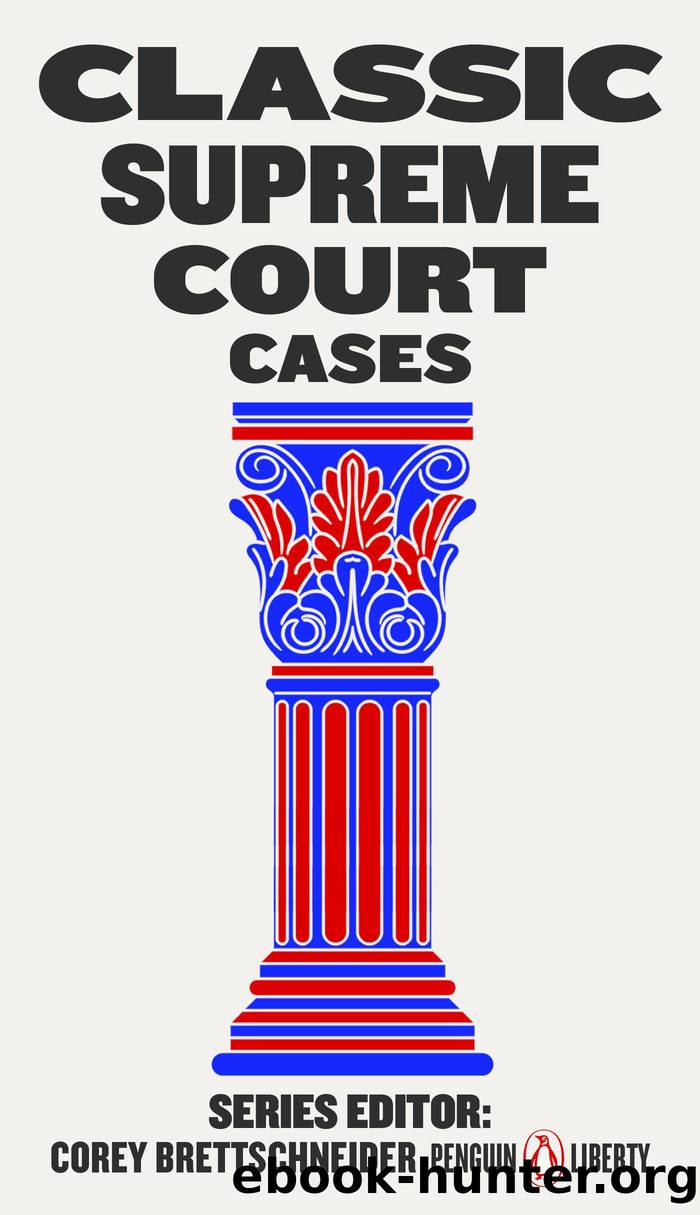Classic Supreme Court Cases by Corey Brettschneider

Author:Corey Brettschneider [Brettschneider, Corey]
Language: eng
Format: epub
Publisher: Penguin Publishing Group
Published: 2023-06-13T00:00:00+00:00
We agree that, in the context of its individualized inquiry into the possible diversity contributions of all applicants, the Law Schoolâs race-conscious admissions program does not unduly harm nonminority applicants.
We are mindful, however, that â[a] core purpose of the Fourteenth Amendment was to do away with all governmentally imposed discrimination based on race.â Accordingly, race-conscious admissions policies must be limited in time. This requirement reflects that racial classifications, however compelling their goals, are potentially so dangerous that they may be employed no more broadly than the interest demands. Enshrining a permanent justification for racial preferences would offend this fundamental equal protection principle. We see no reason to exempt race-conscious admissions programs from the requirement that all governmental use of race must have a logical end point. The Law School, too, concedes that all ârace-conscious programs must have reasonable durational limits.â
In the context of higher education, the durational requirement can be met by sunset provisions in race-conscious admissions policies and periodic reviews to determine whether racial preferences are still necessary to achieve student body diversity. Universities in California, Florida, and Washington State, where racial preferences in admissions are prohibited by state law, are currently engaged in experimenting with a wide variety of alternative approaches. Universities in other States can and should draw on the most promising aspects of these race-neutral alternatives as they develop.
The requirement that all race-conscious admissions programs have a termination point âassure[s] all citizens that the deviation from the norm of equal treatment of all racial and ethnic groups is a temporary matter, a measure taken in the service of the goal of equality itself.â
We take the Law School at its word that it would âlike nothing better than to find a race-neutral admissions formulaâ and will terminate its race-conscious admissions program as soon as practicable. It has been 25 years since Justice Powell first approved the use of race to further an interest in student body diversity in the context of public higher education. Since that time, the number of minority applicants with high grades and test scores has indeed increased. We expect that 25 years from now, the use of racial preferences will no longer be necessary to further the interest approved today.
In summary, the Equal Protection Clause does not prohibit the Law Schoolâs narrowly tailored use of race in admissions decisions to further a compelling interest in obtaining the educational benefits that flow from a diverse student body. Consequently, petitionerâs statutory claims based on Title VI and 42 U.S.C. § 1981 also fail. The judgment of the Court of Appeals for the Sixth Circuit, accordingly, is affirmed.
It is so ordered.
Download
This site does not store any files on its server. We only index and link to content provided by other sites. Please contact the content providers to delete copyright contents if any and email us, we'll remove relevant links or contents immediately.
The Secret History by Donna Tartt(16668)
The Social Justice Warrior Handbook by Lisa De Pasquale(11495)
Thirteen Reasons Why by Jay Asher(7803)
This Is How You Lose Her by Junot Diaz(5801)
Weapons of Math Destruction by Cathy O'Neil(5049)
Zero to One by Peter Thiel(4838)
The Myth of the Strong Leader by Archie Brown(4796)
Promise Me, Dad by Joe Biden(4459)
Beartown by Fredrik Backman(4437)
Stone's Rules by Roger Stone(4424)
How Democracies Die by Steven Levitsky & Daniel Ziblatt(4420)
The Fire Next Time by James Baldwin(4352)
100 Deadly Skills by Clint Emerson(4089)
A Higher Loyalty: Truth, Lies, and Leadership by James Comey(4042)
Rise and Kill First by Ronen Bergman(4026)
The David Icke Guide to the Global Conspiracy (and how to end it) by David Icke(3896)
The Farm by Tom Rob Smith(3880)
Secrecy World by Jake Bernstein(3791)
The Doomsday Machine by Daniel Ellsberg(3741)
